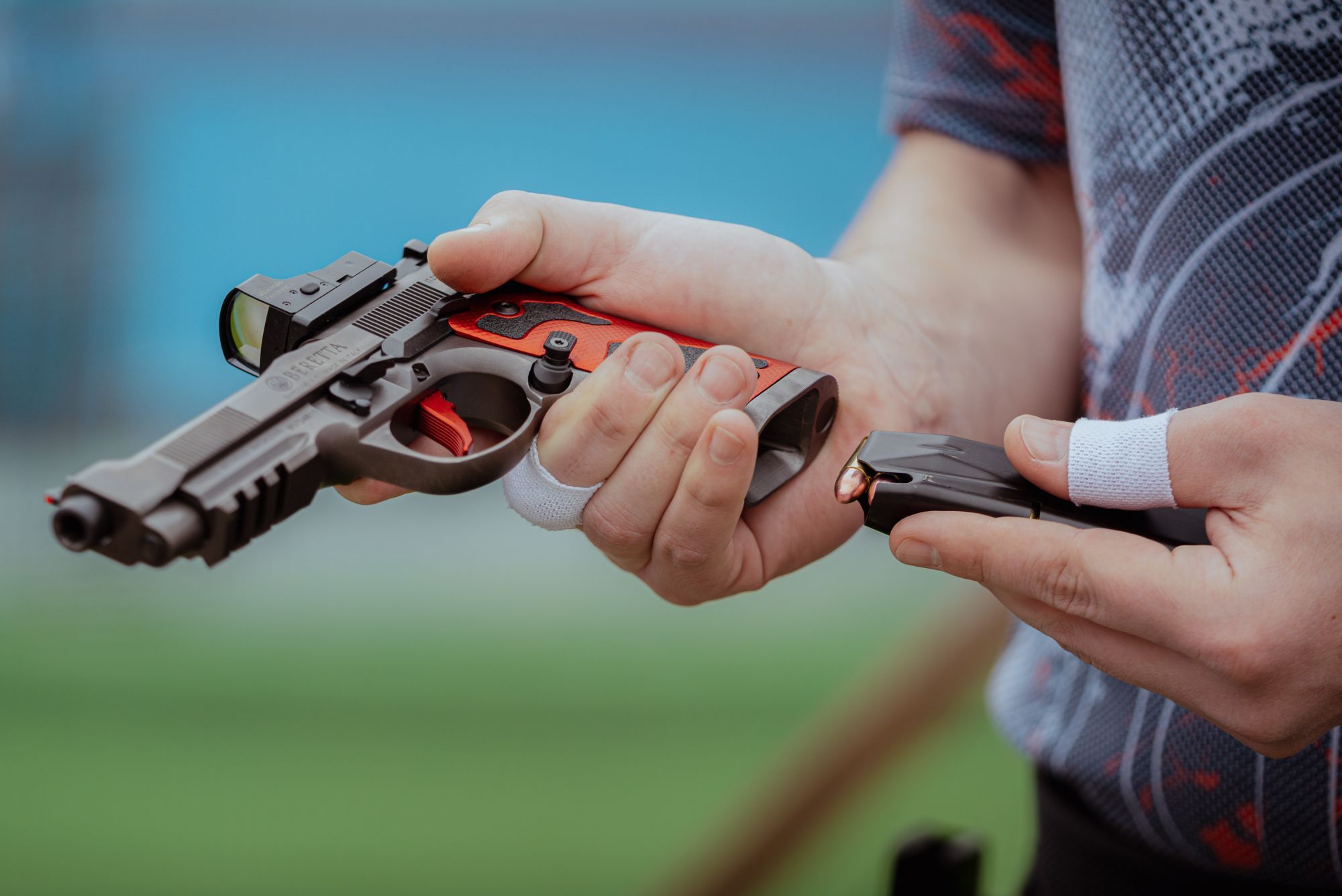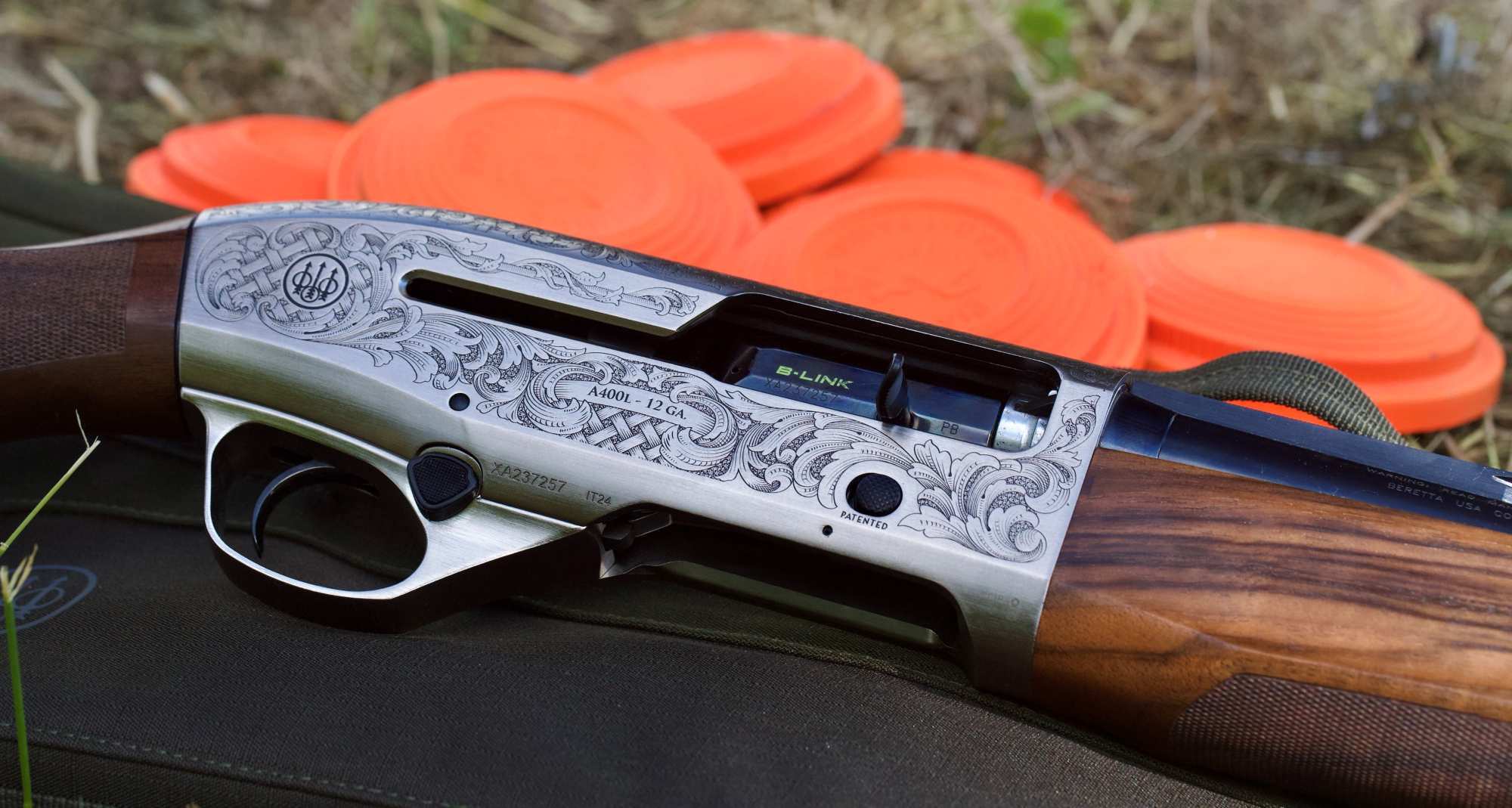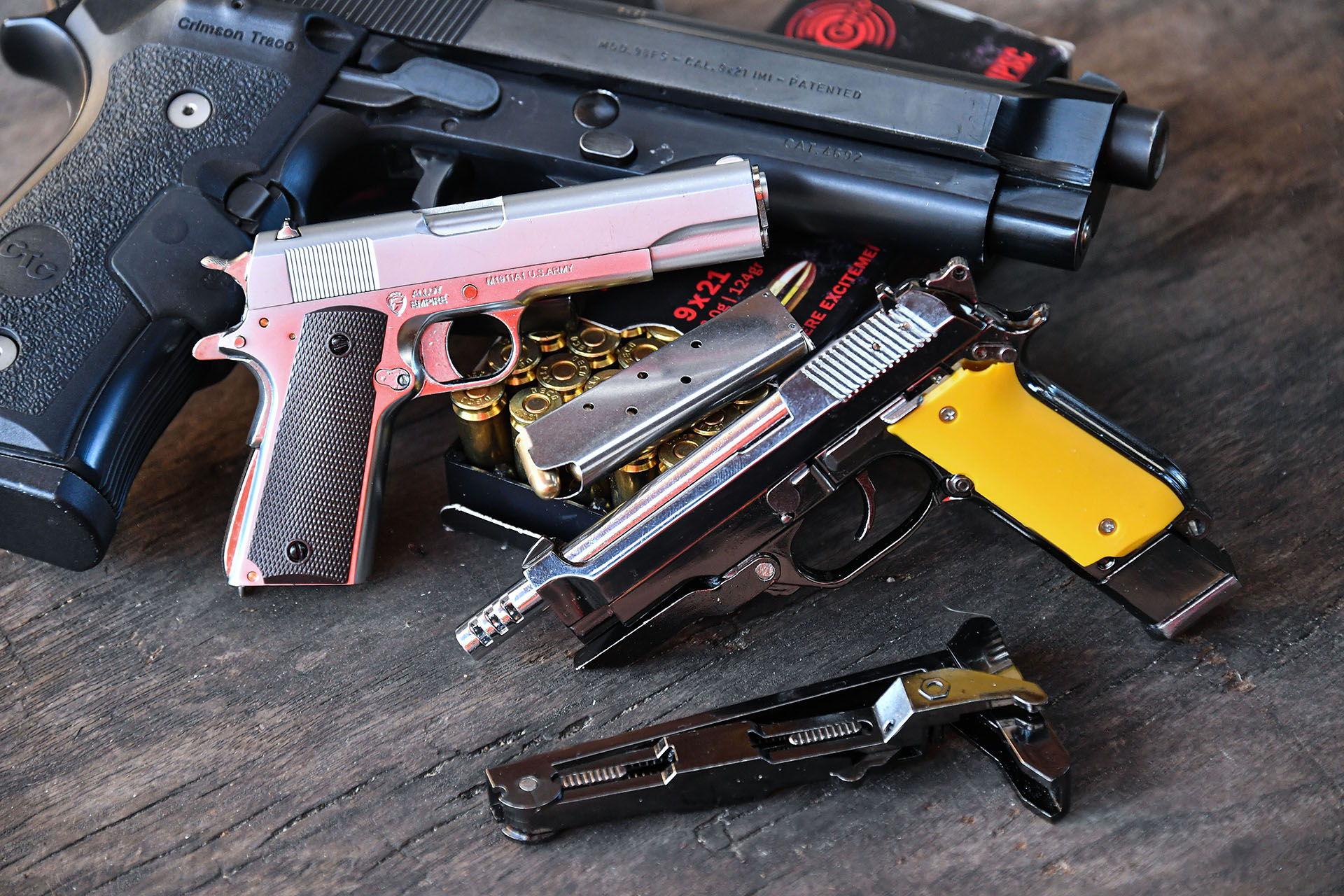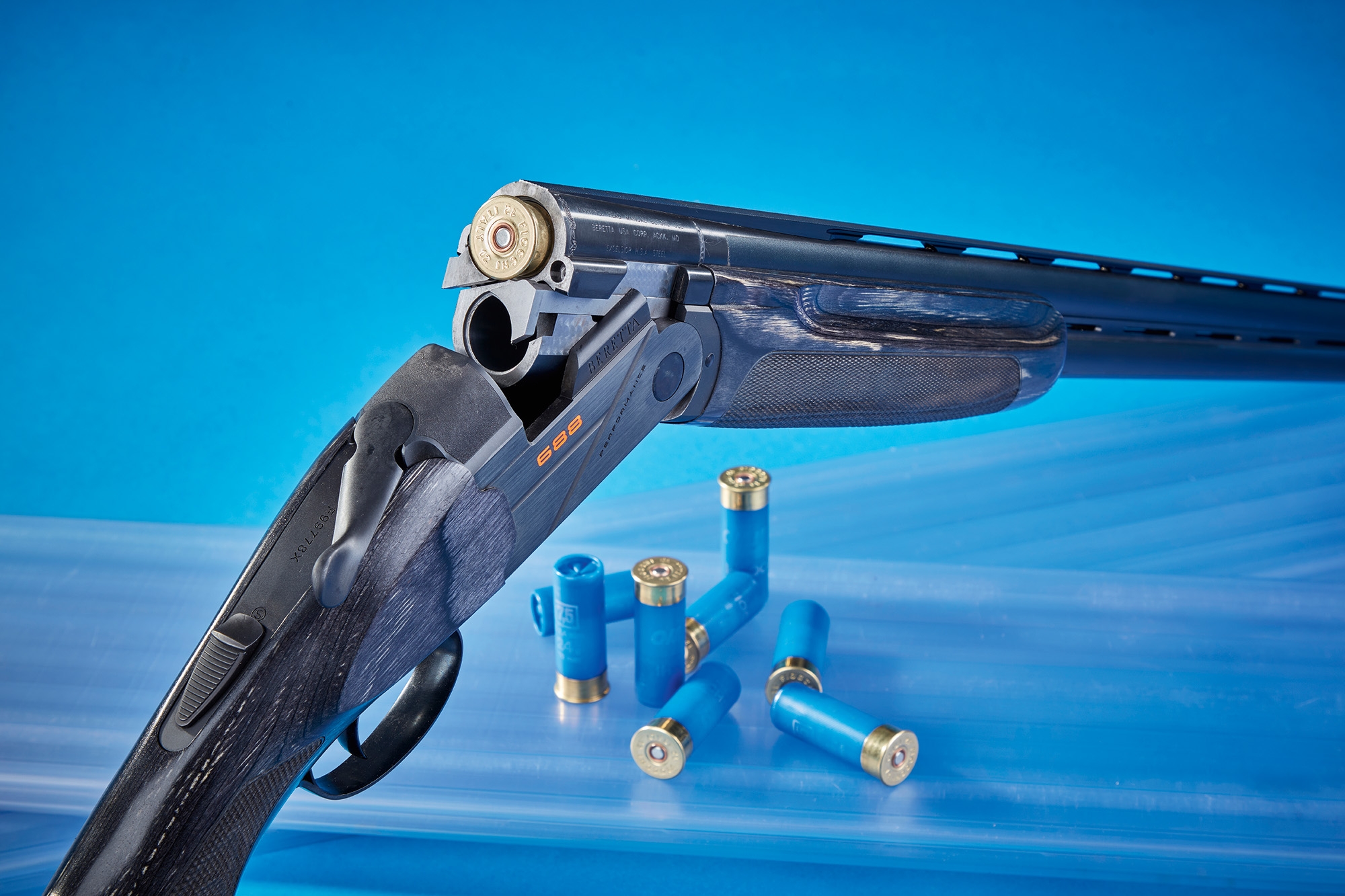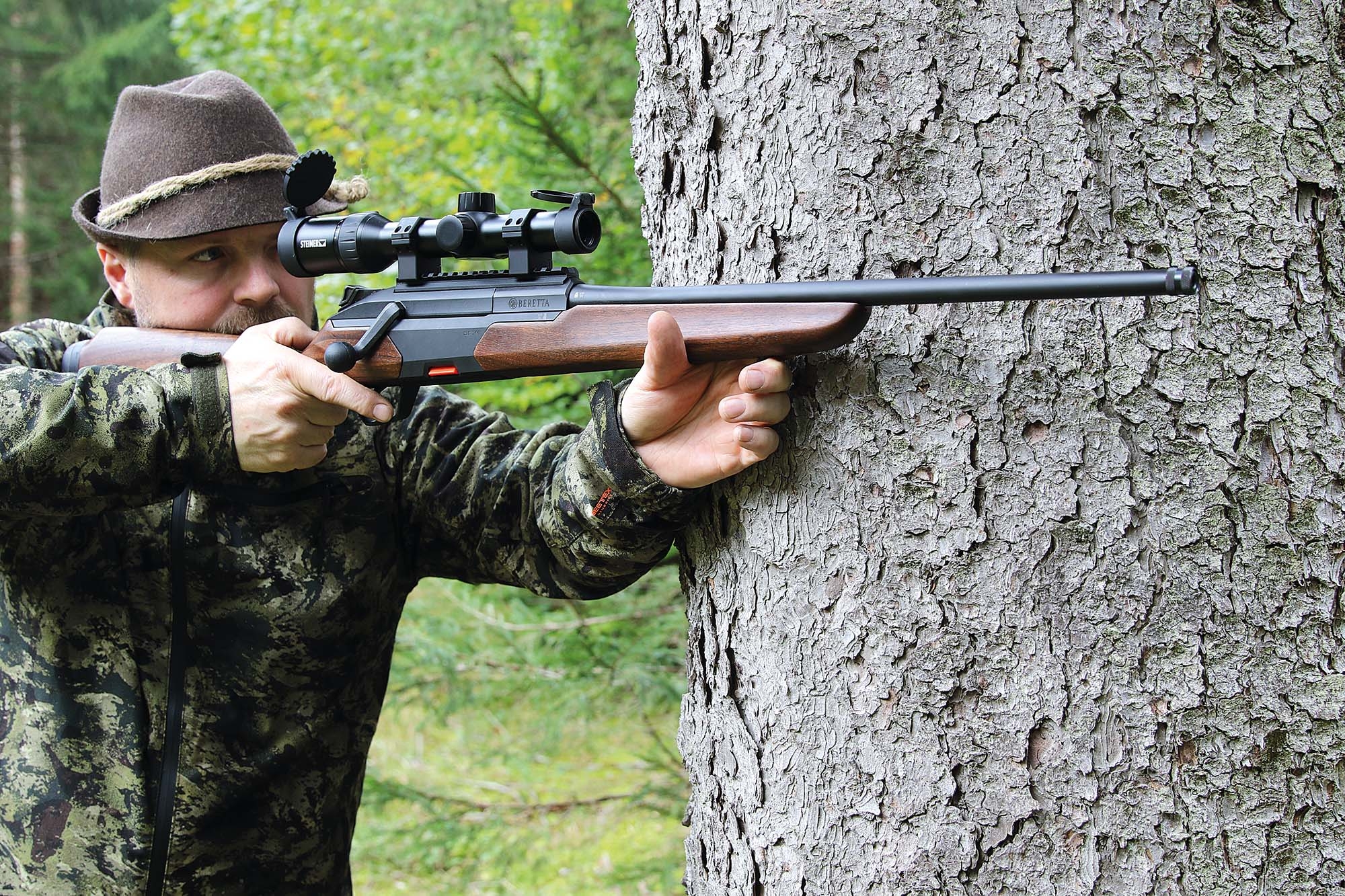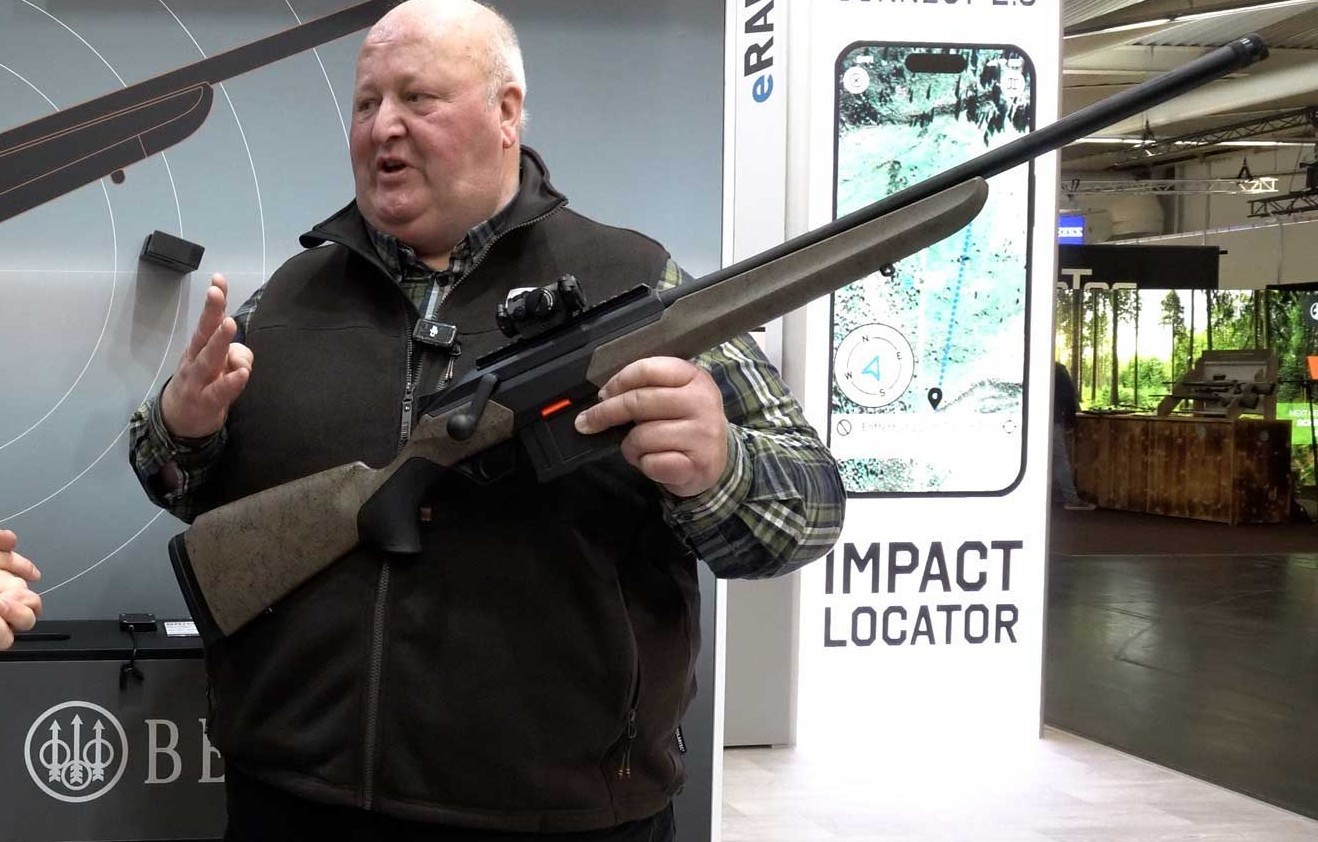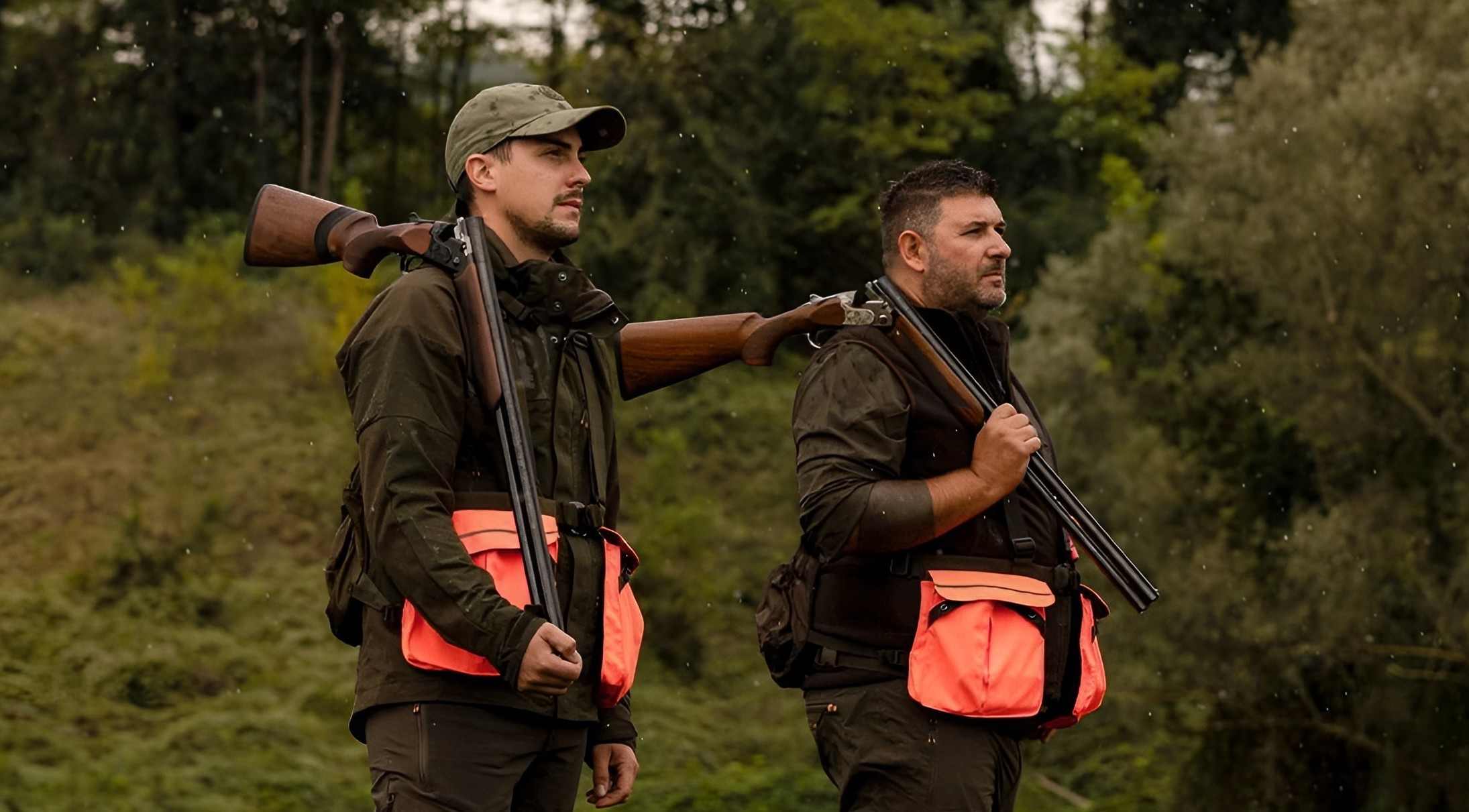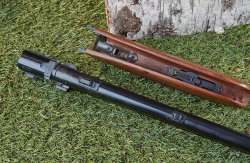
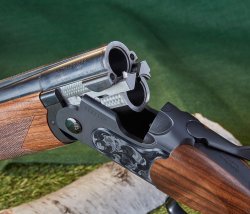
Both steel and aluminum alloys have become indispensable in modern gunmaking. Thanks to its material properties, steel is considered to be more resilient and durable than the aforementioned aluminum alloys. On the other hand, aluminum weighs only about a third as much as steel. When it comes to a shotgun, hunters have had the choice between a gun with a heavier steel build or one made of lighter but less robust aluminum. Clearly, the desire for a lightweight yet extremely sturdy alternative had been around for a long time. In order to fulfill this dream for the hunter, Beretta had to break new ground technically. So a team of twelve developers set about looking for ways to reduce weight. The designers were inspired by their colleagues in the fields of architecture and watchmaking. In particular, the construction of the Eiffel Tower and the design of skeleton clocks are said to have given them the idea for the new shotgun. The goal was quickly defined: a gun that should be at least 400 grams lighter than a comparable model from the previous lineup. In terms of external appearance, the choice fell on a shotgun from the 690 series. On the way to the new shotgun, a number of virtual and real prototypes were made, which were also repeatedly tested and improved under real shooting range and hunting ground conditions. Computer simulations and digital "tayloring" were used to repeatedly analyze where and on which parts material and thus weight could be saved without compromising the necessary stability. After around 11,400 hours of development work and a total of 42 physically actual prototypes, the new shotgun was finally ready for series production. Beretta gave it the name Ultraleggero, which means nothing other than "ultralight”.
Where was weight saved on the Beretta Ultraleggero?
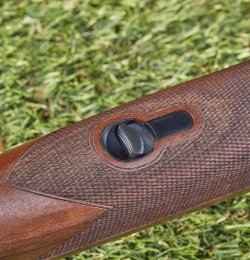
In order to see where the Beretta designers have saved material everywhere on the Ultraleggero, or even exchanged heavier materials for lighter ones, let's first take a look at the component that used to make the difference between a light and heavy shotgun: the action. In terms of external dimensions, the all-black receiver does not differ from that of the 690 models. On the side plates, the Ultraleggero has floral engravings, and on the underside, a surface that shows the manufacturer's logo and model designation in addition to vines. But wait: if you look very closely and touch them, you will notice that these decorated surfaces are plastic parts that imitate the light reflections of an engraving with a holographic 3D effect. To be more precise, they are cover plates made of so-called techno-polymer, which conceal generous cutouts in the steel of the receiver. In comparison to the original 690 basin, 94 grams of weight could be saved in this way. The designers also saved a further 65 grams by replacing the steel trigger group with an aluminum one. However, all functional parts, from the trigger guard to the single selective trigger of the Ultraleggero, remained unchanged.

For the barrel bundle, Beretta relies on its in-house Steelium profile. These barrels feature a double forcing cone of around 80 millimeters before the cylindrical section of the barrel begins. At the rear, a monobloc holds the two barrels, which are held together at the muzzle and in the forend engagement mechanism area by ribs about five and a half centimeters long. Otherwise, the developers have completely dispensed with any further connection between the barrels for weight reasons. Together with the ventilated sight rib, which is only six millimeters wide throughout, this saves a total of around 68 grams on the barrel bundle.

So far, the Ultraleggero is only available in 12/76 Magnum gauge. Beretta equips the Ultraleggero with a 2.5 grade walnut stock as standard, with straight back and pistol grip. The drop is 35/55 millimeters. On both sides of the pistol grip as well as on the forend, a checkering provides a good grip. Even when selecting the stock wood for the Ultraleggero, Beretta deliberately uses blocks made of less dense, i.e. lighter, wood. To ensure that the buttstock weighs even less in the end, the milling cutter scrapes out a very generously sized cavity in it. The enlarged cavity and the lighter wood save about 129 grams in weight. In addition to the standard version, the Ultraleggero is also available in barrel lengths of 66 and 71 centimeters with the Vittoria stock featuring a higher Monte Carlo comb (drop: 35/45/55 millimeters), which is specially designed for ladies and not quite as tall men.
With an eye on the British market, Beretta is not equipping the new hunting shotgun with factory-mounted sling swivels. The British prefer to carry their shotguns into the field in a special bag - carrying the gin on a sling over the shoulder is considered indelicate. However, the manufacturer includes a sling swivel with a clip for the barrel and a sling swivel for screwing into the buttstock with every shotgun. So the customer can ultimately decide for himself whether or not to mount the swivels. Beretta based the forend of the Ultraleggero on the design developed specifically for the 694 model.
In this case, the so-called iron consists of two separate elements. Usually, this component, ensures smooth opening of the shotgun thanks to the redesigned shape and the new barrel hook. The forend engagement mechanism has also been redesigned and consists of a forward fitted release catch which is separate from the forend mechanism.
While on the 694's forend, the aforementioned parts are all steel, on the Ultraleggero the forend system is made of aluminium, saving another 33 grams of weight on this version. If you add up all the weight reduction measures listed here, the bottom line is 404 grams. The development team has thus clearly met the target they set themselves.
Accessory case of the Beretta Ultraleggero with 5 interchangeable chokes

In the case of the Ultraleggero, there are a total of five interchangeable chokes of the flush OCHP type in the sizes F (Full = 1/1), IM (Improved Modified = ¾), M (Modified = ½), IC (Improved Cylinder = ¼) and Cylinder.
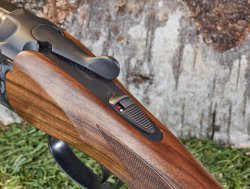
All chokes are suitable for steel shot. However, for shot sizes larger than 3.5 millimeters, Beretta advises using only the more open choke inserts up to and including size ½.
Of course, all other OCHP and OCHPe inserts can be used. These include the new Paradox chokes.
With these, a special rifling within the interchangeable insert ensures that the shot patterns achieves effective cover even at short ranges of 10 to 15 meters.
The Beretta Ultraleggero shotgun in our practical test

During the shooting test at the clay pigeon range, the new Ultraleggero did not show any weaknesses in terms of function. Ejectors and barrel selector worked flawlessly. The trigger released on both barrels at an adequate trigger pull weight of around 1,800 grams. Especially when changing direction quickly in skeet doubles, swinging along with the 2.9-kilogram light and manageable shotgun was a lot of fun.
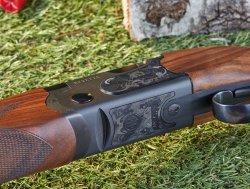
After a few rounds of 25, however, the tester's shoulder began to call out when firing the skeet cartridges with light 24-gram loads and demanded a break, which it would probably have demanded after twice the number of shots with the 3.6-kilogram Sporting shotgun he was familiar with.
Such high numbers of shots are hardly to be expected in local hunting grounds, however, so the stronger felt recoil is quite bearable.
Beretta Ultraleggero specs
| Model: | Beretta Ultraleggero (there are a total of 10 different models) |
| Price: | 2,550 euro (price may be different in your country) |
| Gauge: | 12/76 |
| Capacity: | 2
cartridges |
| Overall
Length: | 1,100 millimeters |
| Barrel
Length: | 66 cm (71 and 76 cm also available) |
| Stock
Length: | 356 mm |
| Trigger
Pull Weight: (U/O): | 1,797
g/1,895 g |
| Weight: | 2,895 grams |
| Version: | Right
(left version 2,645 euro) |
| Features: locking system with trapezoid shoulders and dual conical locking lugs, steel receiver, oil-finished walnut stock, single trigger with barrel selector inside the safety catch, selective ejectors, 5 interchangeable chokes. | |
Conclusion: our overall impression of the Beretta Ultraleggero shotgun
The development goal was impressively achieved – at 2,895 g, less than 6.4 lb, the gun is really light. For those who need magnum loads only now and then or not at all, the Ultraleggero is not only a particularly lightweight, but also a rugged and easy-to-handle shotgun in the usual Beretta quality, whether as a faithful companion for the hunting ground or for sporting shotgun disciplines. The price is also adequate. There are 3 barrel lengths, versions with left-hand stock and also the ladies' models with the model designation "Vittoria".
What we liked: | What we liked less: |
| - A light and manageable shotgun for hunting and sports | - Hard felt recoil with stronger magnum loads |
| - Steel on heavily stressed parts | - Operating manual only available as a download |
| - Accurate fit and finish |
For more information please vist the Beretta website.



